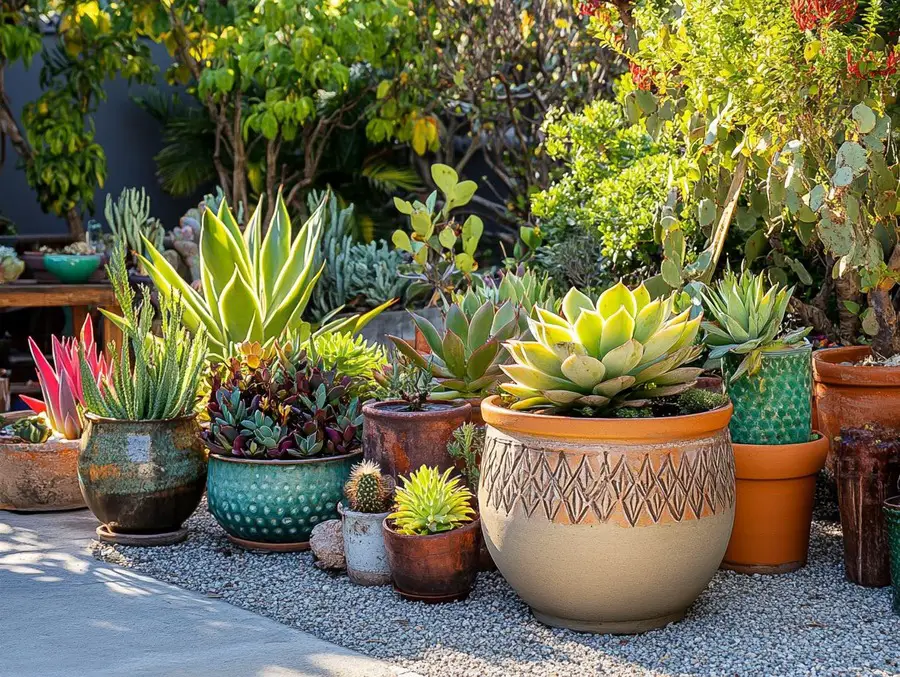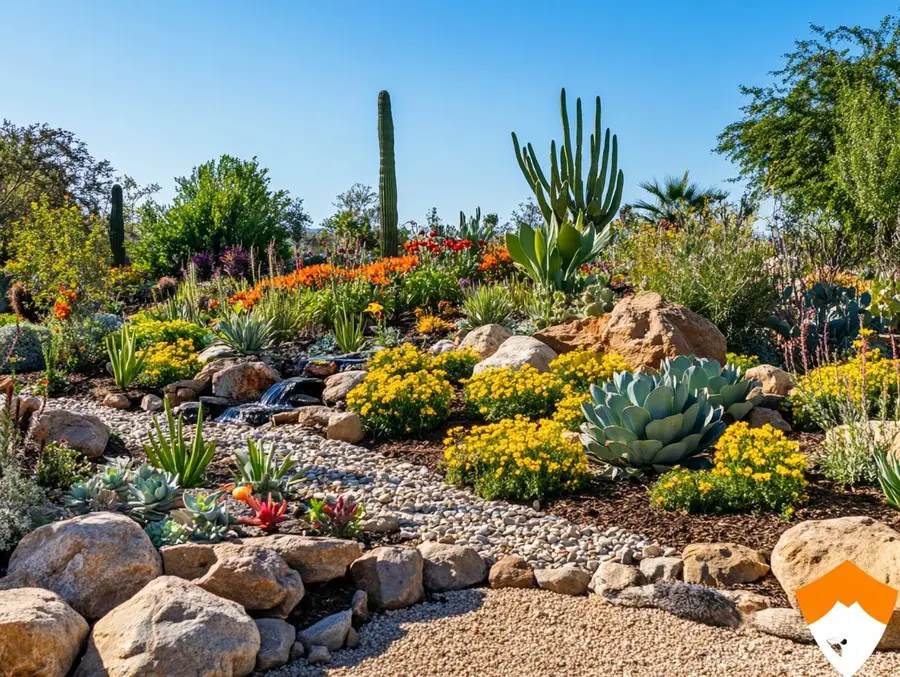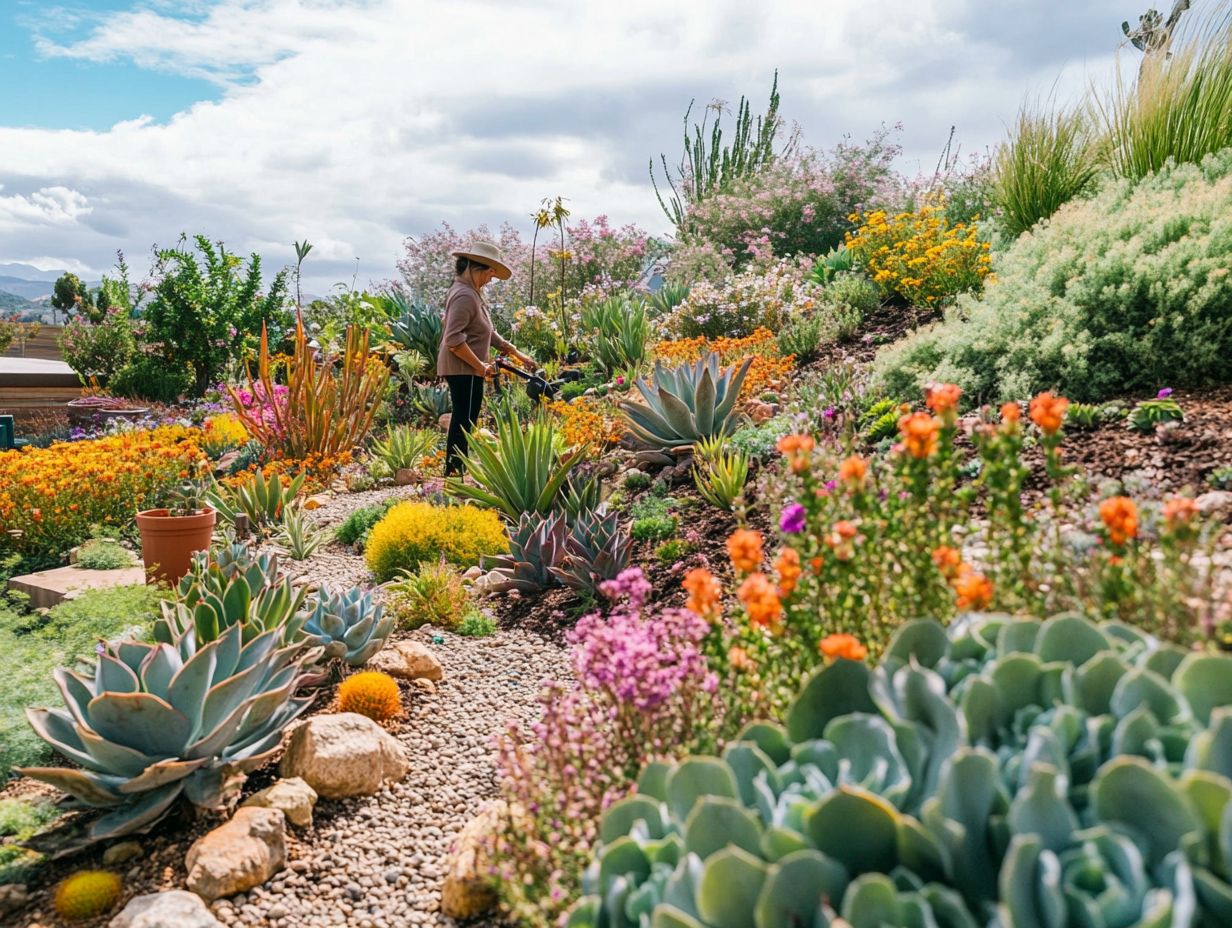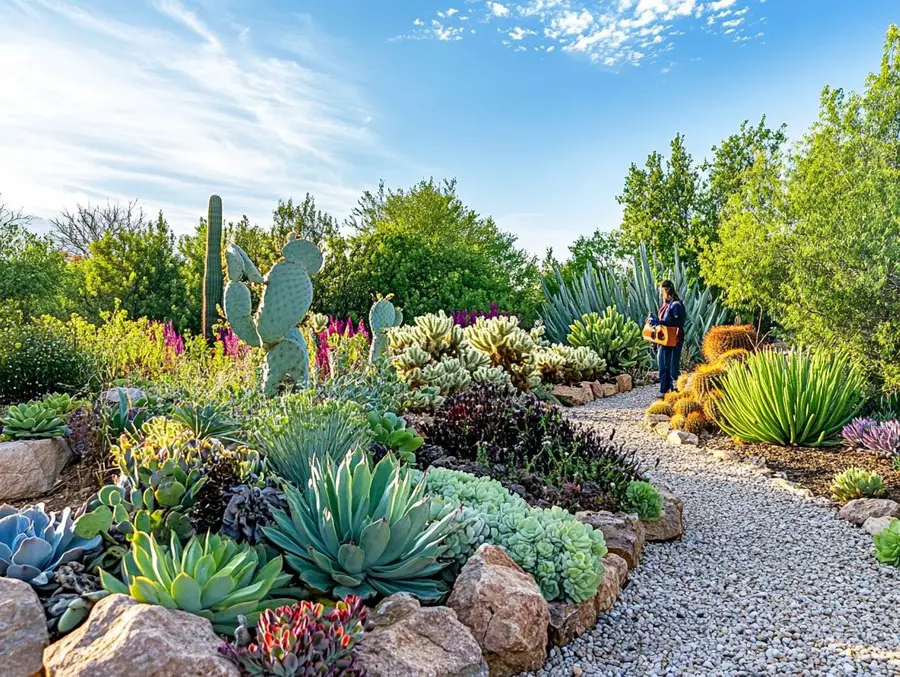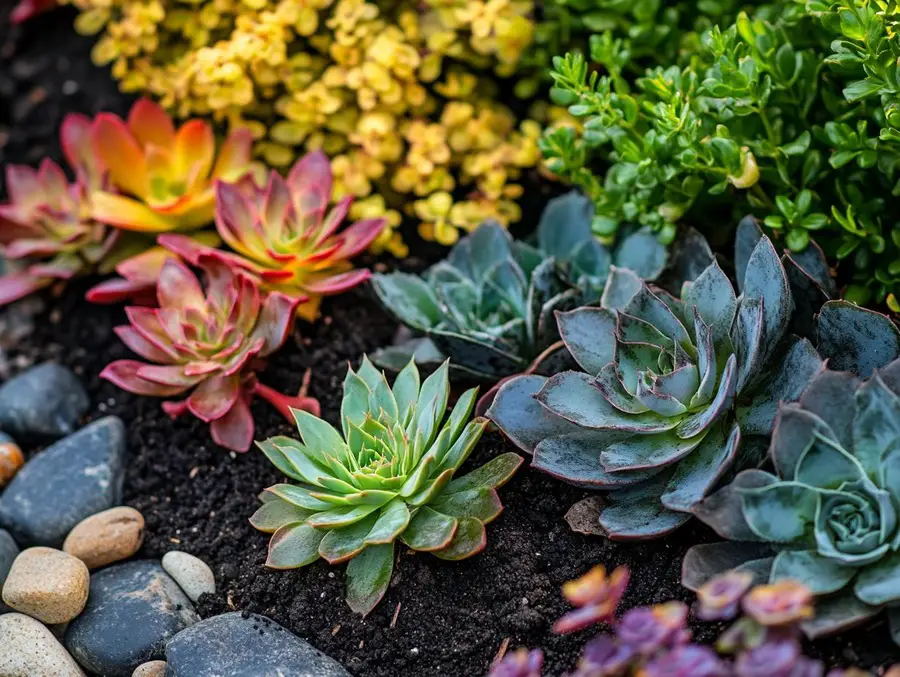We use affiliate links. If you purchase something using one of these links, we may receive compensation or commission.
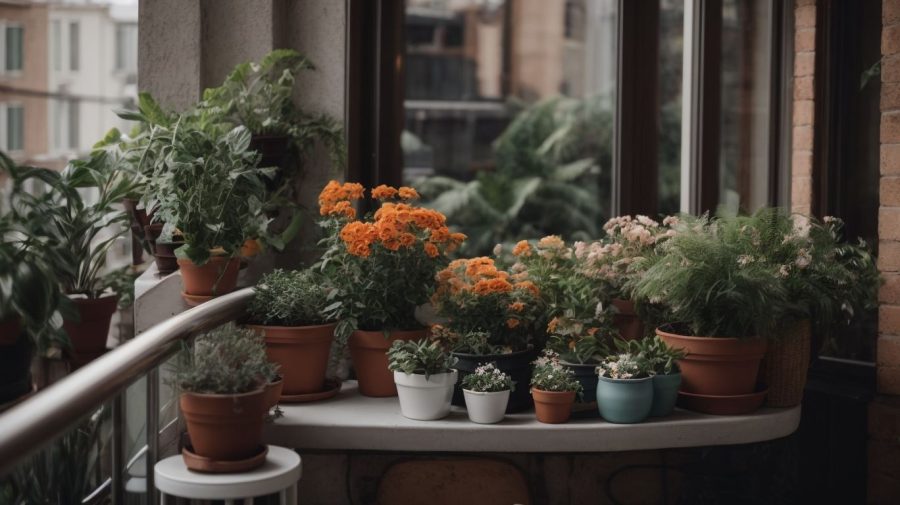
Explore the charm of balcony container gardening! This guide offers tips to transform tiny spaces into vibrant, green havens.
Balcony Container Gardening
Key Takeaways:
- Balcony container gardening is a versatile and rewarding way to garden in small spaces.
- It involves growing plants in containers on a balcony, utilizing limited space to create a lush, green area.
- This method allows for growing a variety of plants, including flowers, herbs, and vegetables, making it ideal for urban settings.
Welcome to the delightful world of balcony container gardening! This guide is your ticket to turning a small balcony into a flourishing green space.
Whether you’re a seasoned gardener or a newbie, we’ll share tips and tricks to help you grow a stunning garden in containers, right on your balcony.
What Is Balcony Container Gardening?
Balcony container gardening is a versatile and rewarding way to garden in small spaces.
It involves growing plants in containers on a balcony, utilizing limited space to create a lush, green area.
This method allows for growing a variety of plants, including flowers, herbs, and vegetables, making it ideal for urban settings.
Are you ready to transform your balcony into a lush, vibrant oasis? In this comprehensive guide, we will explore the ins and outs of balcony container gardening, offering invaluable tips and techniques for maximizing your outdoor space.
From assessing your balcony’s unique sunlight levels to selecting the perfect plants for your environment, we’ll cover everything you need to know to create a thriving balcony garden.
Whether you’re a seasoned gardening enthusiast or a novice with a green thumb, this article will provide practical insights and creative ideas for making the most of your balcony space.
Get ready to dive into the world of balcony gardening and unlock the potential of your outdoor haven.
Key Takeaways:
- Maximize small space: Utilize vertical space and suitable containers to grow a variety of plants on your balcony.
- Consider sunlight and wind: Assess your balcony’s sunlight levels and choose wind-resistant plants for successful gardening.
- Maintain regularly: Regular maintenance and watering are key to keeping your balcony garden thriving and looking beautiful.
Assessing Your Balcony Space and Sunlight Levels
In terms of balcony gardening, the first step is to assess the available space and sunlight levels to determine the optimal conditions for plant growth.
Considering the amount of sunlight the balcony receives is crucial for choosing the right plants.
Some may require full sun, while others thrive in partial shade.
The size of the balcony will dictate the number and types of plants that can be accommodated.
Factor in the wind exposure and local climate conditions to understand the environmental impact on plant health.
Choosing the Right Plants for Balcony Gardening
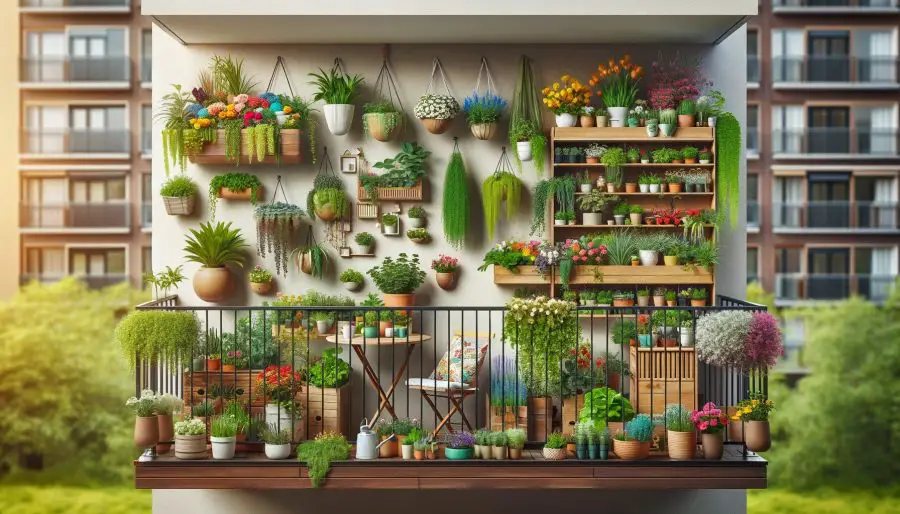
Selecting the right plants for balcony gardening is crucial to ensure successful growth and a vibrant green space that thrives in a confined urban environment.
When choosing plants for balcony gardening, it’s important to consider the growing conditions, such as sunlight exposure, wind exposure, and temperature fluctuations.
Herbs are a popular choice for balcony gardens due to their compact size and versatility. Common options include basil, parsley, and mint.
For vegetables, compact varieties like cherry tomatoes, bell peppers, and salad greens are suitable.
Incorporating ornamental plants like flowers and succulents adds aesthetic appeal and diversity to the space.
Optimizing Plant Selection for Tidier Growth
Optimizing plant selection for tidy growth in balcony gardening involves choosing plants that exhibit controlled and compact growth patterns, enhancing the overall aesthetics of the space.
When selecting plants for a balcony garden, it is important to consider their growth habits.
Look for compact and slow-growing varieties that do not require frequent pruning or maintenance.
Plants with a neat and tidy appearance, such as dwarf shrubs, compact herbs, and small flowering perennials, can contribute to a well-managed and visually appealing garden.
Opting for self-cleaning plants that shed leaves and flowers naturally reduces the need for regular cleaning and upkeep.
Selection of Suitable Plants for Container Gardening
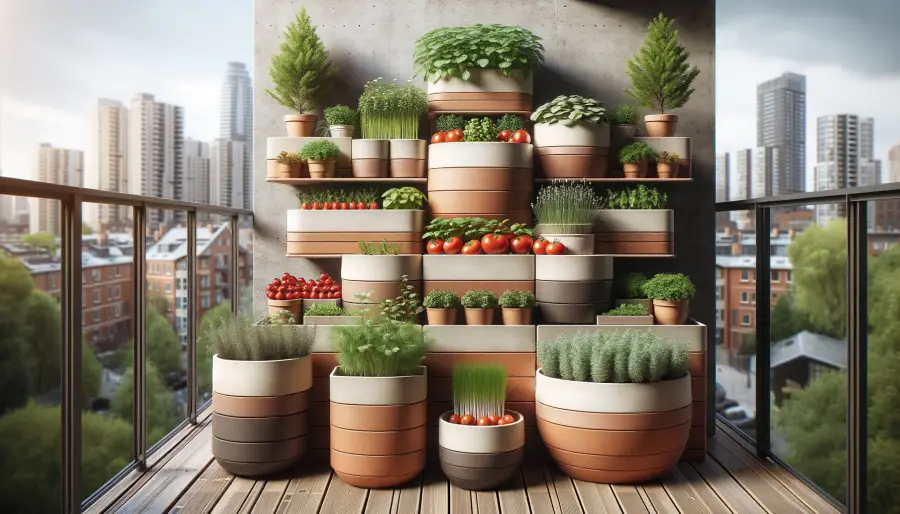
The selection of suitable plants for container gardening is essential for urban dwellers aiming to cultivate greenery in restricted spaces, utilizing pots and soil-efficient setups.
One critical aspect of choosing plants for container gardening is to consider the growing conditions in urban areas, which may differ from traditional garden settings.
Selecting Plants
Plants need to be adaptable to limited space, and potentially harsh environmental factors and thrive in soil that may not be as nutrient-rich as garden beds.
When selecting plants, it’s important to assess their adaptability to container environments.
Low-maintenance and compact varieties like herbs, dwarf varieties of vegetables, and flowers such as petunias, marigolds, or begonias are often ideal choices.
Choosing Containers
Considering the pot size and material is vital. A proper drainage system, adequate space for root development, and lightweight yet sturdy containers are desirable features for growing healthy plants.
Soil Selection
Regarding soil selection, opting for high-quality potting mixes with good drainage and aeration properties is crucial.
These mixes often contain a balanced blend of peat moss, perlite, vermiculite, and other organic materials to promote healthy root growth and moisture retention.
Coco coir is another eco-friendly soil selection and is preferred over peat moss. It offers excellent drainage and soil aeration properties.
Don’t use garden soil it is not suitable for containers and may contain bugs or diseases.
Utilizing Vertical Space for Plant Growth
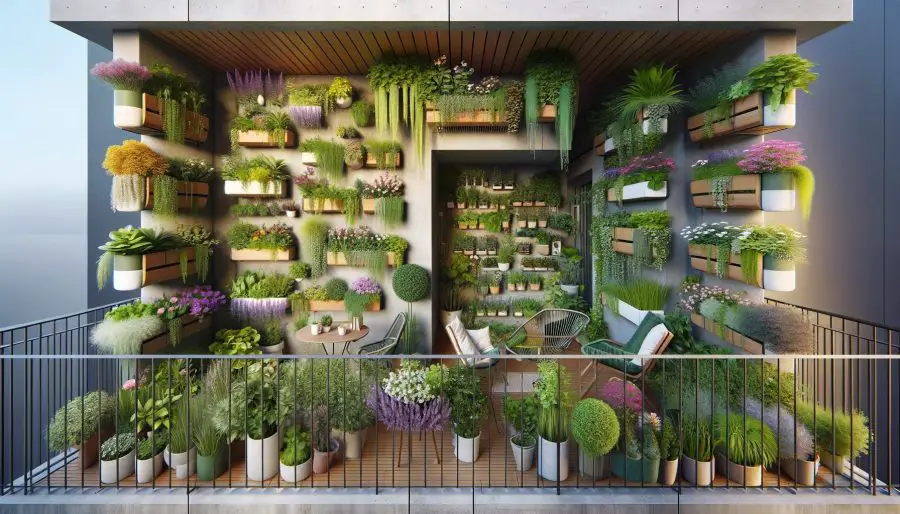
In balcony gardening, maximizing plant growth through the efficient use of vertical space and trellises can significantly expand the greenery potential of a limited balcony area.
Vertical gardening offers the advantage of creating a lush vertical garden display without taking up valuable floor space.
By utilizing trellises, climbers, and hanging planters, one can form an impressive cascade of vegetation that not only enhances the aesthetic appeal but also provides privacy and shade.
This approach not only optimizes space but also allows better airflow, making it suitable for a wide range of plants including lush foliage, fragrant herbs, and even compact fruiting varieties.
Implementing Wind-Resistant Plants for Balcony Gardening
Implementing wind-resistant plants in balcony gardening is crucial to ensure the resilience and health of greenery in challenging outdoor conditions.
When selecting wind-resistant plants for balcony gardening, it’s essential to consider the environmental conditions of the area.
Plants exposed to strong winds need to be able to withstand these forces.
Some suitable plant varieties include ornamental grasses like feather reed grass or blue fescue, evergreen shrubs such as boxwood or heather, and flowering perennials like lavender or salvia.
In terms of maintenance, regularly checking for any damage from the wind, providing support if necessary, and ensuring proper watering are essential to promoting healthy growth and longevity of the plants.
Techniques for Growing Vegetables on a Balcony
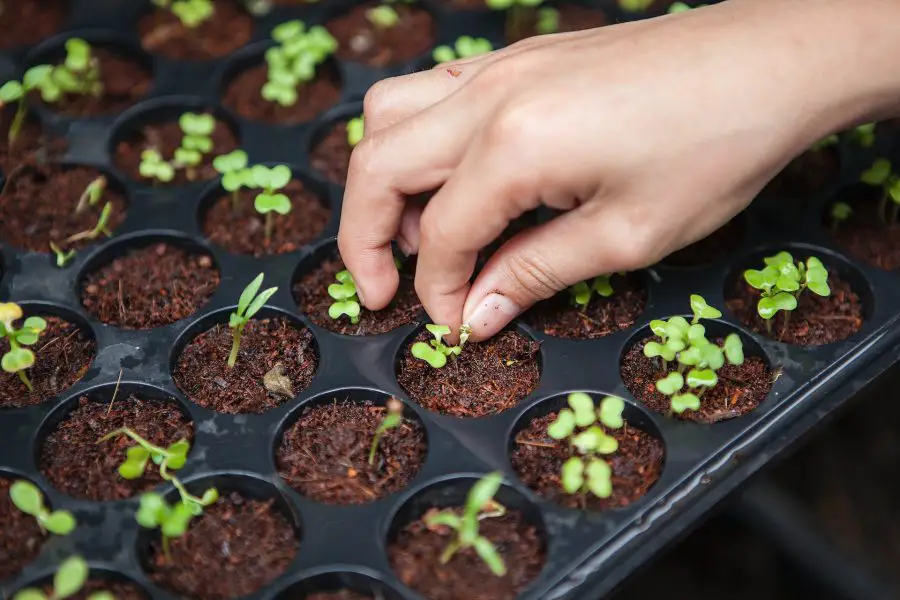
Mastering the techniques for growing vegetables on a balcony gives the power to urban gardeners to cultivate fresh produce in limited spaces, enhancing self-sustainability and nutritional value.
One of the key considerations for balcony vegetable gardening is the choice of soil.
Opting for a lightweight, well-draining potting mix is vital for the health of the plants.
Ensuring that the balcony receives adequate sunlight is crucial.
The orientation of the balcony and nearby buildings can impact the amount of sunlight it receives, so it’s important to carefully observe these factors.
Vegetables like tomatoes or peppers need at least 6 hours of direct sunlight.
Herbs, lettuce, spinach, and other greens need less light
Choose the right containers
Container selection also plays a significant role in successful balcony gardening.
Choosing the right containers that provide sufficient space for root growth and efficient drainage is essential.
Using hanging baskets, railing planters, or tiered shelving can maximize available space, allowing for a variety of vegetables to be grown.
Regular Maintenance
Regular monitoring and care, including watering, fertilizing, and pest control, are essential for healthy vegetable growth.
Balcony gardeners may need to be mindful of watering frequency, especially during hot weather, to prevent soil from drying out.
Introducing natural pest repellents and organic fertilizers can help maintain a thriving balcony garden.
Effective Maintenance Tips for Balcony Gardens
Implementing effective maintenance tips is essential for nurturing thriving balcony gardens, and addressing the challenges of water, wind, sunlight, and seasonal changes to sustain healthy plant life.
Watering Frequency
In terms of watering your balcony garden, finding the right balance is crucial.
Overwatering can lead to root rot, while underwatering can cause the plants to wither.
Aim to water the plants when the top inch of the soil feels dry, usually 1-2 times per week, adjusting based on weather conditions.
Wind Protection
Some balconies, especially in highrises can experience windy conditions.
Consider utilizing wind protection measures such as barriers or trellises to shield delicate plants from strong gusts, which can cause damage or dehydration.
Sunlight Exposure
It’s also vital to manage sunlight exposure by positioning the plants according to their specific light requirements, especially during the scorching afternoon hours.
Seasonal adjustments, such as transitioning to more heat-tolerant plants in summer and protecting sensitive species in winter, can ensure the garden’s vitality year-round.
Enhancing Balcony Garden with Furniture and Decor
Enhancing the balcony garden with suitable furniture and decor can elevate the overall ambiance and create an inviting outdoor oasis, blending nature with functional and aesthetic elements.
In terms of selecting furniture for your balcony garden, consider pieces that are both stylish and weather-resistant, such as rattan chairs, foldable tables, and benches with built-in storage.
Incorporating cozy cushions and throw pillows in vibrant colors can infuse personality and comfort.
Introducing potted plants, hanging planters, and vertical gardens can maximize the space while adding a touch of greenery and fresh decor.
Additionally, lighting fixtures like string lights or lanterns can create a warm and cozy atmosphere for evenings on the balcony.
Introducing Houseplants to Balcony Environment
Introducing houseplants to the balcony environment can enrich the green space and offer diverse foliage options, bringing indoor charm to the outdoor setting of balcony gardening.
When selecting houseplants for the balcony, it is essential to consider the amount of sunlight the space receives and the local climate conditions.
Gradually acclimate them to the outdoors. Start with a few hours and gradually increase their exposure.
Succulents and ferns are excellent choices for shaded balconies, while herbs and flowering plants thrive in sunny spots.
Caring for balcony houseplants involves regular watering, occasional fertilization, and repotting when necessary.
Integrating beloved indoor plants such as spider plants and peace lilies into the balcony setup can add familiarity and joy to the outdoor sanctuary.
Maximizing Balcony Space for Gardening
Maximizing balcony space for gardening involves strategic planning and innovative solutions to optimize the available area for plant cultivation, reflecting the essence of urban gardening in confined settings.
One efficient way to make the most of limited balcony space is by utilizing vertical gardening techniques.
Vertical gardening not only saves space but also creates a visually appealing green wall.
Hanging planters, trellises, and wall-mounted containers are excellent options for growing herbs, flowers, and even vegetables.
Clever placement of furniture and shelves can create multi-tiered plant displays, maximizing the use of vertical space, while still leaving room for relaxation and entertainment.
Understanding Watering Needs for Balcony Garden
Understanding the specific watering needs of a balcony garden is essential for maintaining optimal soil moisture, promoting healthy growth, and addressing drainage considerations to prevent water-related issues.
Adequate drainage is vital for balcony gardens, as excess water can lead to root rot and other water-related problems.
Utilizing containers with drainage holes, adding a layer of gravel at the bottom of pots, or using raised beds can promote proper drainage.
Managing soil moisture through regular monitoring and adjusting watering frequency based on weather conditions and plant requirements is crucial.
Applying the correct watering techniques, such as watering at the base of plants to prevent water evaporation and prevent wet leaves and foliar disease.
Using a watering can or drip irrigation can further enhance water efficiency in balcony gardening.
Choosing Suitable Plants for Balcony Gardening
In terms of balcony gardening, selecting suitable plants is essential to realize unique and inspiring balcony garden ideas, considering sunlight exposure, soil quality, and seed preferences.
Deciding on plants that thrive in the specific sunlight conditions of your balcony is crucial for a flourishing garden.
From flowering plants to herbs and vegetables, there are numerous options for creating a diverse and visually appealing space.
Additionally, compact and trailing plants can make efficient use of limited space and create a cascading effect that adds dimension to the garden.
When selecting seeds, it’s important to consider the climate zone and the available resources for maintenance.
Opting for disease-resistant varieties can contribute to a productive and low-maintenance garden.
Many species have been specifically bred for container gardening, ensuring adaptability to the confined environment of a balcony.
Utilizing the Best Containers for Balcony Gardening
Utilizing the best containers for balcony gardening is paramount in creating an efficient and visually appealing setup, optimizing space utilization, and soil management for thriving plant growth.
When selecting pots for balcony gardening, consider the size and weight of the containers, as well as their material.
Lightweight options like resin or plastic are ideal for maneuverability and preventing excess stress on balcony structures.
- For limited space, vertical planters or hanging baskets can maximize the use of the available area while adding an aesthetic element to the environment.
- Choosing containers with adequate drainage holes is crucial for preventing waterlogging and promoting healthy root development.
Once the containers are chosen, focus on the type of soil. It’s essential to use high-quality, well-draining soil to ensure proper aeration and moisture retention for the plants.
Implementing container-based gardening techniques, such as strategic placement of pots to optimize sunlight exposure and regular pruning to control plant size, can further enhance the productivity and aesthetics of the balcony garden.
By carefully considering these factors, one can create a flourishing garden oasis in a limited space without compromising on plant health and vitality.
Implementing Creative Balcony Garden Ideas
Implementing creative balcony garden ideas adds a personalized and inventive touch to urban gardening, incorporating innovative approaches for cultivating herbs, vegetables, and ornamental plants in limited spaces.
One unique balcony garden concept involves vertical gardening, which maximizes space utilization by using hanging planters, trellises, and wall-mounted containers.
Another innovative design is the creation of multi-tiered gardens using shelves, racks, or ladders, allowing for greater plant variety within a confined area.
In addition, container gardening opens the door to imaginative plant combinations, from cascading flowers to edible landscapes, promoting both aesthetic appeal and practical use.
Growing Fruits and Vegetables in a Balcony Garden
Growing fruits and vegetables in a balcony garden is a rewarding and sustainable endeavor, offering urban dwellers the opportunity to harvest fresh produce and embrace self-sufficiency within limited outdoor spaces.
With a careful selection of plant varieties suited for container gardening, such as tomatoes, peppers, strawberries, and herbs, even small balconies can become ample sources of homegrown goodness.
Consider adding dwarf fruit trees suitable for your climate. Many fruit trees are easy to control the size with pruning.
Balcony gardens require regular watering, adequate sunlight, and nutrient-rich soil, but the effort pays off with a plentiful supply of delicious, organic food.
Addressing the Challenges of Balcony Gardening
Addressing the challenges of balcony gardening involves overcoming obstacles related to plant care, environmental factors, and the cultivation of herbs and vegetables in varying wind, water, and sunlight conditions.
One of the most common challenges faced in balcony gardening is the limited space available for plant growth.
To overcome this, consider utilizing vertical space by using hanging planters or wall-mounted containers.
These allow you to grow a variety of herbs and small vegetables without taking up valuable floor space.
Managing water distribution and sunlight exposure can be a challenge, with some plants receiving too much or too little.
Investing in self-watering systems or using self-watering planters and regularly rotating plants can help maintain balanced growing conditions.
Creating a Garden-Like Ambiance on Your Balcony
Creating a garden-like ambiance on your balcony involves harmoniously blending decor, furniture, and plants to establish a tranquil and inviting outdoor space that reflects the essence of balcony gardening.
One effective strategy to achieve this ambiance is by incorporating a variety of potted plants, such as flowering plants, herbs, and small trees, to add color, fragrance, and texture to the balcony.
Integrating climbing plants or vining species can create a lush, green backdrop that enhances the overall garden feel.
Carefully selecting and positioning decorative planters and ornamental containers can contribute to the aesthetic appeal of the space, adding to the garden-like atmosphere.
Exploring Plant Options for Balcony Gardening
Exploring plant options for balcony gardening presents a diverse array of herbs, vegetables, and ornamental plants suitable for enhancing the greenery and appeal of a well-structured urban garden space.
Herbs such as basil, rosemary, and mint are excellent options for balcony gardens due to their compact size and aromatic foliage.
They thrive in containers and can be easily incorporated into cooking.
For vegetable choices, tomatoes, peppers, and lettuce are popular due to their adaptability to container growth.
Ornamental plants like petunias, geraniums, and marigolds add vibrant colors and fragrances, enhancing the visual appeal of the garden.
Ensuring adequate sunlight, watering, and occasional fertilization supports the thriving growth of these plants, contributing to a lively and flourishing balcony garden.
Maximizing Small Space for a Beautiful Balcony Garden
Maximizing a small space for a beautiful balcony garden necessitates strategic planning, compact arrangements, and innovative gardening solutions tailored to the unique challenges of urban and confined environments.
One practical tip for maximizing small spaces in balcony gardening is to utilize vertical space efficiently.
Hanging planters, trellises or wall-mounted containers can help in adding greenery without encroaching on the limited floor space.
Incorporating multi-functional furniture, such as benches with built-in planters or tables with integrated storage for gardening tools, can optimize space utilization and create a harmonious balance between function and aesthetics.
Frequently Asked Questions
Q. What is balcony container gardening?
A. Balcony container gardening is a type of gardening where plants are grown in containers on a balcony or other small outdoor space. It allows those without a traditional garden to still enjoy growing plants and vegetables.
Q. What types of plants can I grow in a balcony container garden?
A. You can grow a wide variety of plants in a balcony container garden, including flowers, herbs, vegetables, and even small trees or shrubs. It all depends on the size of your containers and the amount of sunlight your balcony receives.
Q. What are the benefits of balcony container gardening?
A. Balcony container gardening has several benefits, including providing fresh produce, adding beauty to your outdoor space, and creating a peaceful and relaxing atmosphere. It is also a great way to connect with nature and reduce stress.
Q. What containers should I use for balcony container gardening?
A. There are many options for containers in balcony container gardening, including plastic pots, wooden planters, hanging baskets, and even repurposed items like old buckets or tin cans. The most important factor is that the container has proper drainage holes.
Q. How do I care for my plants in a balcony container garden?
A. Plants in balcony container gardens require regular watering, adequate sunlight, and occasional fertilizing. It is also a good idea to regularly remove dead or dying leaves to promote healthy growth. Different plants may have specific care instructions, so be sure to research your specific plants.
Q. Can I create a balcony container garden if I have a small balcony?
A. Yes, you can still create a balcony container garden even if you have a small balcony. You can use hanging baskets, or vertical planters, or choose compact plants that don’t take up much space. You can also utilize your balcony railing or wall for additional space.
Related Content
Visit my Amazon Influencer Page for videos and gardening products Grow Your Own Garden








